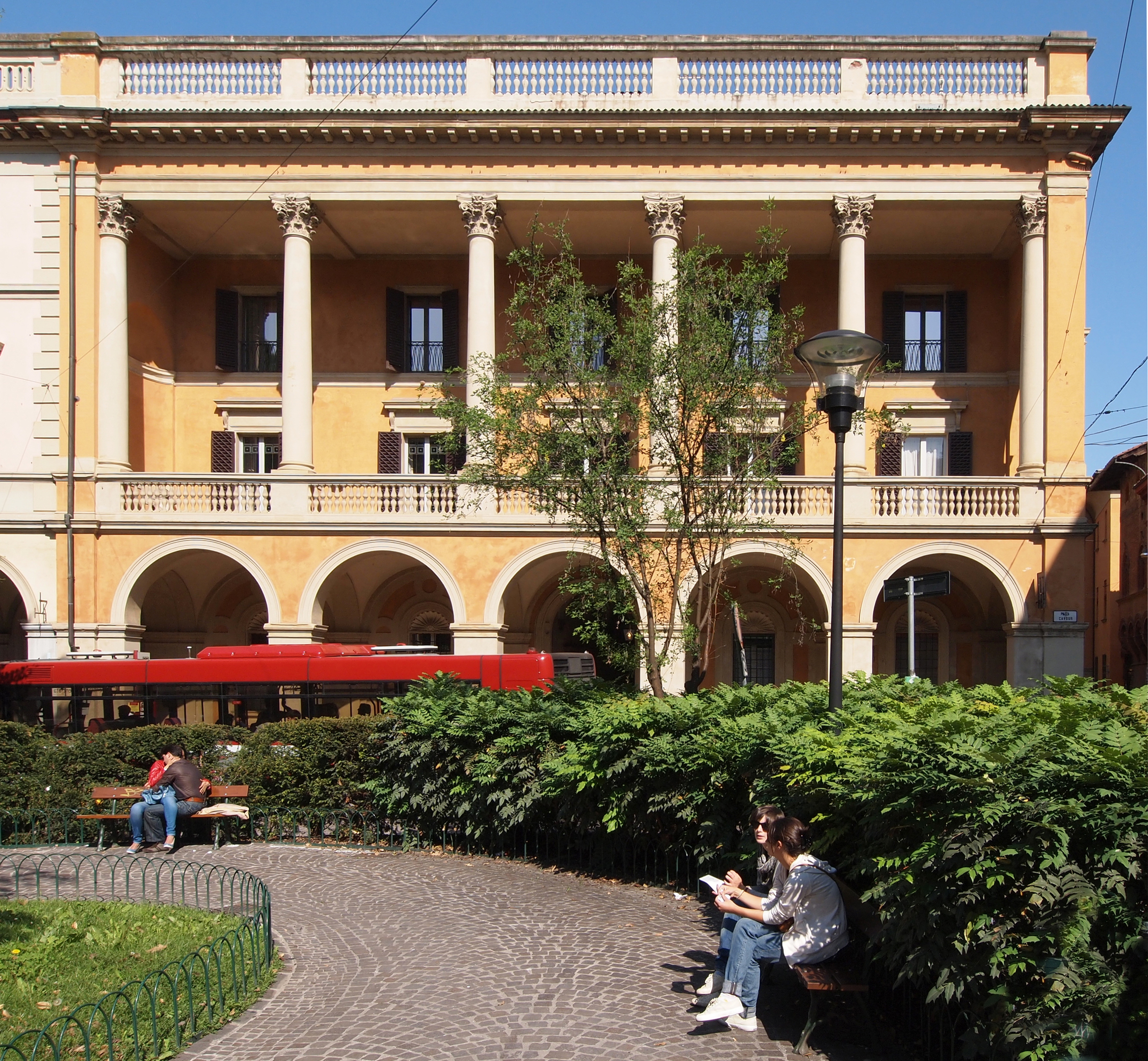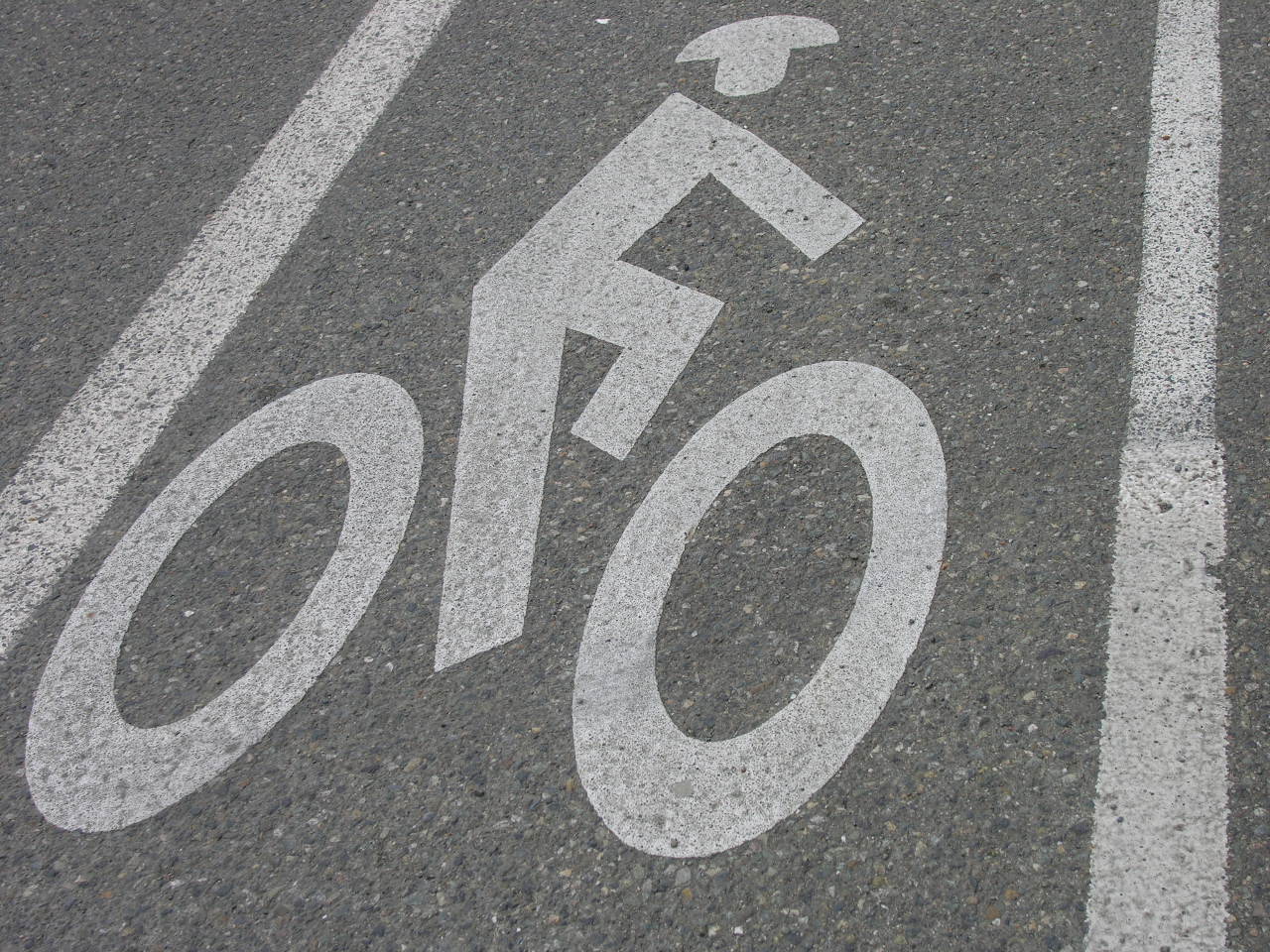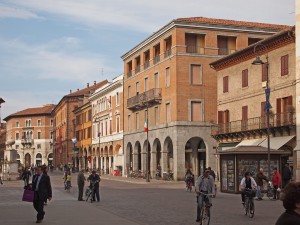[caption id="attachment_1986" align="alignnone" width="700" caption="Bologna: Distant View of Famous Tower"] [/caption]
[/caption]
As well as being home to the world’s oldest university, Bologna has many other noteworthy accolades: it is among Italy's wealthiest cities, it is a favorite destination of Italian tourists when traveling within their own country, and its population growth has been amongst the steadiest in the county. These facts, along with others, make Bologna the most dynamic of the three cities visited on the tour, and the most urban, in a contemporary sense. While there are certainly tourists in abundance, Bologna’s prosperity does not rely on their support alone; it is a national center for commercial trade fairs, publishing houses and bookstores, and academic pursuits of all kinds. It is also a fast-paced city that still maintaining the charms of its smaller Italian brethren.
[caption id="attachment_1901" align="alignnone" width="700" caption="Colonnade and Bologna's Duomo"] [/caption]
[/caption]
Wandering the streets of Bologna, one does not get the sense the city had a zenith, or point at which its development was stalled or frozen. Its prosperity extended beyond the Renaissance, and in fact continues to this day, making it an interesting venue to take note of an evolution of the uses of public space, new urban typologies, and the changes in the private and public buildings that create them. The most obvious manifestation of this evolution is Bologna's justly famed colonnades. Kilometers of them. Over forty in total, should memory serve me correctly? While other cities have colonnades -- and Bologna certainly did not invent them -- the sheer profusion and varying character of those in the capital of Emilia Romagna is profound. They occur on nearly every street, in every neighborhood, and are made up of every traditional material imaginable. They share many similarities amongst their variety, however. They are typically one or two stories high, have arches defining their street side, and their ceilings are typically groin or arched vaults. These physical attributes are secondary to their spatial importance, for taken in toto, the colonnades create an extension of the public realm into the private -- and vice-versa -- throughout the city. This new venue enabled a finer grain of public space, and perhaps, new levels of social interaction.
[caption id="attachment_1863" align="alignnone" width="700" caption="Long Colonnade"] [/caption]
[/caption]
Within the common traits, however, there are differences in craft and spatial definition. Those along main shopping streets are, as one would imagine, amongst the fanciest, with their adjoining buildings tempting passers-by with elegantly displayed merchandise, while those defining newer streets are straighter than those in the older parts of the city. Many of those in the university districts are decidedly plainer, even a bit tired looking, and a reflection of the disposable income of the students who frequent them. Yet no matter the use of the adjoining structure, almost every building has a colonnade, shop fronts or not, with some colonnades even occurring along blank walls.
[caption id="attachment_1942" align="alignnone" width="700" caption="Simple Colonnade"] [/caption]
[/caption]
[caption id="attachment_1947" align="alignnone" width="700" caption="Fancy Colonnade"] [/caption]
[/caption]
[caption id="attachment_1945" align="alignnone" width="700" caption="Colonnade Corner"] [/caption]
[/caption]
An interesting signifier of the evolution of the colonnade can be found in their exterior designs, and how the uniformity (or lack there of) between individual colonnades untied (or did not) the street wall formed by the buildings. This change is indicative of the conception of the city as a whole, and is key to the evolution of the city in the West. In Bologna, one can see how early on colonnades varied from one building to another, with hardly a care for the design of their neighbors. As time progressed, colonnades became a great unifier of the streetscape, and were designed to the same heights and materials, regardless of the continued individual expressions of the buildings set upon them. This unified design approach marked an important step is seeing the city as a collection of desperate parts, to one where rules of decorum were established, rules of order that reflected the greater stability and confidence projected by urban dwellers in their relationships with one another and with the city itself. The city was less a place of the individual, and more the place of the collective, of the group, and in so being the architecture and the streets they defined were unified. This new, unified conception of the streetscape was a result of an ever more united political and social purpose, and the rising interrelationships between individuals as the market economy took greater hold, and the beneficiaries and drivers of that market economy – the middle class – had a greater role in defining the public realm, and its need for recognizable spaces within which for people to gather, to tend to affairs.
[caption id="attachment_1949" align="alignnone" width="700" caption="Early Colonnades"] [/caption]
[/caption]
[caption id="attachment_1912" align="alignnone" width="700" caption="Newer Colonnades AlongVia dell'Indipendenza"] [/caption]
[/caption]
[caption id="attachment_1948" align="alignnone" width="700" caption="Newer Colonnades Along Via dell'Indipendenza"] [/caption]
[/caption]
A similar – yet contrary -- argument, could be made of Bologna’s contemporary, foreign, totalitarian regimes, which expended great efforts on creating unified expressions of their absolute power, their ability to control everything, including the (quasi) public realm. Yet Italy was not a unified country until the late 19th century, and though there certainly were local dukes controlling the affairs of others, their influence could not have been as great in countries such as France, where the powers of the kings was absolute, and where commerce, entrepreneurship, and trade was less important to the well being of the city as was the case in Italy. And I do not need to waste efforts to note the disastrous effects a market economy un-checked can have on cities, as found in profusion throughout the United States. But I digress.
[caption id="attachment_1909" align="alignnone" width="700" caption="Piazza Maggiore"] [/caption]
[/caption]
Bologna’s most important public space, the Piazza Maggiore, makes use of the colonnade, and the social structure if fostered, to great success. Here, the ground floor activities of the surrounding buildings are not appendages or after-thoughts, but fully integrated uses, with the colonnade being the intermediary brokering the deal between private and public realms, and creating the necessary in-between space often crucial to seeing the grey between the black and white. Bologna’s justly famous left-of-center politics are well served by the Piazza, with open political debate occurring at all hours during our stay there.
[caption id="attachment_1866" align="alignnone" width="700" caption="Neptune Fountain"] Pontificator, Piazza San Maggiore
Pontificator, Piazza San Maggiore
While certainly not unique, and probably not the first of it kind, Piazza Maggiore's splendid Neptune fountain is of a scale and conception that sets it apart, and is the strongest indicator yet of the redefinition of the piazza from a place of politics and markets to one of leisure. This formidable statue breaks in message and in execution from the previously predominant statue paying homage to a city noble man, military hero, or favorite son. It is a statue that pays homage to a mythical character meant to evoke ones fancy, not one's loyalty to the state. By depicting Neptune, the designer made direct reference to Italy's Roman past, Italy’s cultural heritage. Had it been a statue to Caesar August, the same association would have been made, but that would have been more political than cultural, and far less evocative of the new emphasis on leisure activity the piazza was now charged with. By paying homage to Neptune, cultural association is squarely the target. This statue is all about art, not politics. It is meant to be visually entertaining, and not taken too seriously (even tough it is a serious work of art). Its scale -- and its impressive base -- not only defines the space within which it was inserted, but provides ample places on which to sit and socialize. Urban furniture at its finest, and at a grand scale, placed for the pleasure (and appeasement?) of the public.
 [/caption]
[/caption]
[caption id="attachment_1951" align="alignnone" width="700" caption="A Transparent Palazzo"]
 [/caption]
[/caption]A subtler, yet equally important evolution in urban typology-evolution is in evidence in Bologna as well: that of the de-fortification of the palazzo, in which here I also include the de-fortification of (i.e. planting of) the piazza. Centuries passed between the Piazza Diamante of Ferarra (see previous post) and the palazzo pictured here. Just as the Este Dukes of Ferrara went from castello to Renaissance palazzo, the gentry of Bologna went from the Renaissance palazz0 – and its still essentially fortified demeanor -- to one of a more refined detailing and openness. Furthering this advancement was a more substantial relationship between palazzo and piazza (now more of a garden, in contemporary parlance), which was afforded by the loggia pictured here, where the loggia gives the palazzo’s residents something pleasant to look at. Were cities becoming safer places, and fortified homes no longer needed? Perhaps. Or was it that city dwelling had evolved beyond simple survival, to expand to notions of sociability, openness, and a closer relationship with nature? Had expressing the pleasures of urban living usurped expressing merely its means of survival? The same questions (and implied answers) could be inferred by the garden in front of the palazzo. This garden is no place of business, or of authority. It is a place in which to relax, to enjoy, all actions that can doubtlessly happen in a non-planted piazza, but here the garden’s obvious use is pleasure -- not business. And the landscape is the perfect medium to make this transition, by presenting a softer image of urban living, the same as the loggia that fronts it.
[caption id="attachment_1910" align="alignnone" width="700" caption="The Two Towers"]
 [/caption]
[/caption]Bologna’s charms are not limited to academic musings of the evolving nature of urban space, for it houses many of the typically charming medieval and Renaissance qualities of it neighboring cities. The most famous of these qualities being a pair of massive towers, just outside the Piazza Maggiore. They are all that remains of perhaps dozens of such medieval structures, these two neighbors (like the one in Pisa), are a bit our of true, and unfortunately closed to visitors out of concern that the extra weight might make them collapse. The photo distorts their true sizes -- they are quite tall and massive (see the first image of the post to better sense the size of the tallest), yet are crammed within the smallest imaginable piazza. Of course, Bologna is filled with little gems of buildings, all alone, whose gem-like qualities are more so because of the contrast to the colonnaded buildings.
[caption id="attachment_1944" align="alignnone" width="700" caption="Small Chapel"]
 [/caption]
[/caption]The best of the little gems was the biggest surprise -- a little shop front by Scarpa! At least that is who I assume designed it, as it has all the requisite trademarks. What a great find it was indeed, I only wish time has permitted me to return to it and have a look inside during business hours.
[caption id="attachment_1865" align="alignnone" width="700" caption="Scarpa (?) Shop-Front"]
 [/caption]
[/caption]The changes noted above were not unique to Bologna, and the political and cultural forces that heralded them are informed speculation on my part -- informed mostly by comparing them to the previous cities visited on this tour, and on many previous ones. I will continue to explore the notions of commerce, the market place, leisure, and the political and cultural structures within which they worked formed not only these magnificent Italian cities, but moving also in our own cities, in our own time.






























